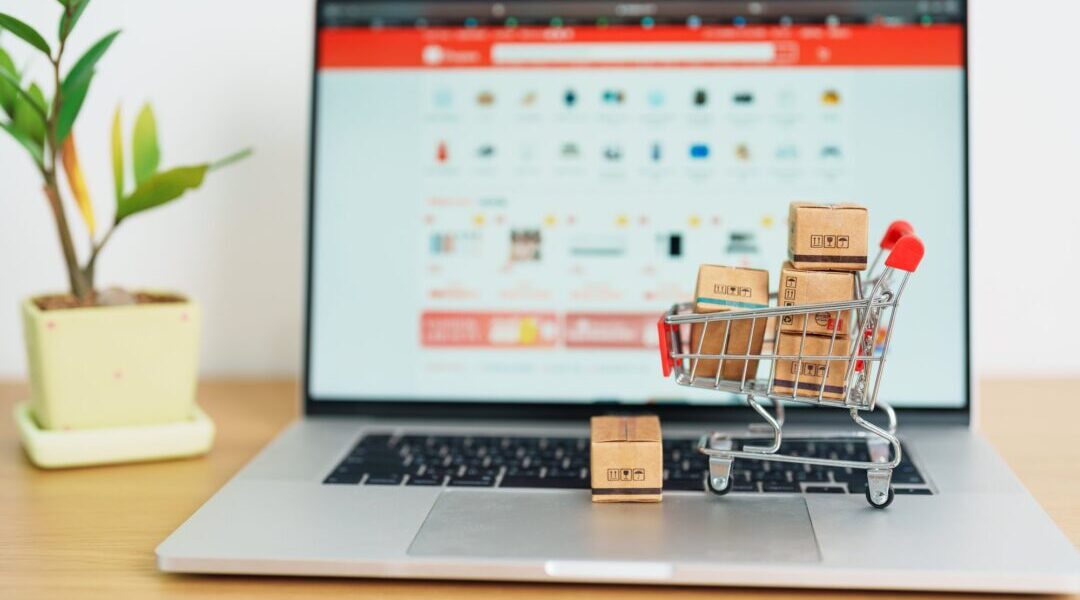Are you a newcomer to the B2B online marketplace, looking for the right platform to sell your products and services? With so many platforms available, how do you know which one is right for you? Which B2B marketplace should you trust with your business?
The answers depend largely on your specific needs and priorities. Ease-of-use, integration, security, and wider market access are considerations when choosing a preferred supplier.
Typically, it doesn’t take long for a customer to make an online B2C purchase. They usually have their minds already made up. Even if they decide to look for a better deal or further options, chances are it won’t add more than a few minutes to the entire process.
For B2B buyers, it’s a completely different ballgame. Unlike individual customers, companies prefer to buy in bulk and wholesale. This applies to everything from consigned retail products to office supplies and plant equipment.
Owing to the size and cost of these purchases, a business’s buyer team must practice due diligence before awarding a contract to any supplier. As a result, company buyers usually take their time researching potential suppliers. These buyers won’t base their recommendations on the wit and charm of the salesperson. Instead, they would rather perform their own research.
What Is a B2B Online Marketplace?
A digital B2B platform is where companies connect with other businesses and source their needs. Simply put, it’s a network of businesses offering their products and services to other businesses. However, this marketplace is exclusively online and not available to individual customers.
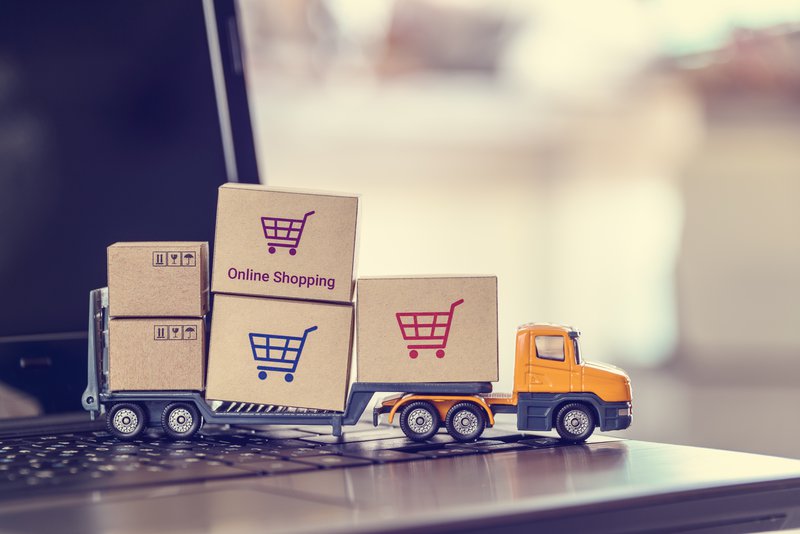
When it comes to finding the products that companies need, the B2B online marketplace is the ultimate resource. No matter how specialized the equipment or how large the quantities are, businesses can find just what they need—all in one place.
In fact, Grandview Research reported that the global B2B market’s total value was $6.88 trillion in 2021. Moreover, researchers foresee the market growing at a CAGR of 19.7% between 2022 and 2030.
Selling on the Big Stage
Typically, businesses that sign up for a B2B online marketplace will connect through a portal. Once they have access to the platform, they can set up their own virtual shop and display their products.
The process also requires businesses to integrate their communications, ordering, and payment systems with the platform to enable buyers to contact them via the portal.
The platform owner takes care of the portal’s maintenance, ensures everything runs smoothly, and assists with marketing and promotion. Each business can also utilize the platform’s customer support and shipping services. This integration can improve a company’s supply chains, thus raising profitability. In return, the platform gets a cut from each sale made through its portal.

Most businesses currently trade on platforms such as eWorldTrade, Global Sources, Alibaba, and Amazon Business. However, many companies also choose to ply their wares via their own B2B marketplace.
Indeed, McKinsey’s 2022 report entitled “The new B2B growth equation” found that more than 7 out of 10 businesses saw their market share grow after launching their own B2B online marketplace. Meanwhile, only 42% of companies still traded on major B2B platforms experienced the same growth.
An impressive 72% of businesses experienced market share growth after creating their own B2B online marketplace.
COVID-19 Accelerated the Online Shift
But what makes the B2B marketplace such an attractive option among corporate buyers? Before the pandemic, purchasers were already moving online. The pandemic accelerated that shift, as buyers and sellers experienced heightened restrictions for health and safety reasons.
Before COVID-19, McKinsey reported that 52% of buyers found traditional selling more important than online selling (48%). However, once the pandemic initiated shutdowns, the situation was reversed, with 66% of buyers rating the B2B online marketplace as more crucial than traditional sales (34%).
Why do the majority of buyers prefer the online marketplace? For one, it’s very compatible with remote work. Going to the trouble of meeting a salesperson to get the information you need became unnecessary after the internet leveled the playing field.

Prior to this, salespeople monopolized information, forcing buyers to enlist their assistance. Today, eCommerce marketplaces host the exchange between buyers and sellers, with the former having the means to conduct their own due diligence on potential suppliers.
The online system also provides a more streamlined way to manage orders, payments, and deliveries. All processes are now digital, meaning less back and forth when securing quotes, invoices, and signatures.
For Both Buyers and Sellers
Of course, buyers stand to gain a lot from an expanded register of resources. With access to a network of suppliers, they can look for the best prices and better products in terms of quality and workmanship. Further, the B2B online marketplace allows buyers to compare different sellers’ payment or delivery terms.
The more conscientious purchasers might even want to check up on the profiles of each supplier, the goal being to find out about each vendor’s core principles and business practices and check whether these align with their own values.
For sellers, joining a B2B online marketplace also opens a new world of opportunities. This vast digital arena allows them to communicate with buyers from across the globe. Thanks to modern eCommerce technology, sellers can display their products, provide additional information, and share product demonstrations and user testimonials. What’s more, it’s all possible without even having to leave company headquarters!
By joining a B2B marketplace with shared aims and ideals, companies are free to tap into a larger customer base. They can also benefit from the platform’s expanding brand presence and established reputation. At the same time, vendors might want to take advantage of a platform’s marketing programs and promotions.
Why Do You Need B2B Online Marketplace Software?
B2B online marketplace software isn’t simply an application facilitating purchases—there’s much more than just transacting. The online portal helps to establish and maintain relationships between businesses. There are interactions between platform and seller, platform and buyer, and buyer and seller. The software makes it much easier and more convenient for all three parties to communicate with one another.

The platform operator has every reason to keep its seller base happy. This starts with having a fully-functional portal that performs as advertised. As such, buyers can easily log in and browse the available product catalogs and supplier lists.
Processes such as getting quotes, filling out orders, completing a transaction, processing payments, and arranging deliveries should be straightforward. And if problems do arise, then customer services will be on hand to help resolve the issue.
Sellers Expect the Same as Buyers
Meanwhile, sellers have very similar expectations to buyers. They count on a slick and streamlined experience when uploading product catalogs, updating prices and available stock, or receiving inquiries and requests from potential buyers.
Sellers also want orders and payments made through the system to reflect immediately in their inboxes. Similarly, the operator needs to handle and resolve any issues that come up during the course of a transaction.
The B2B platform software should make everything seamless, orderly, and transparent throughout the process. After all, providing a platform where buyers and sellers meet is just the beginning of their responsibility.
The goal is to ensure easy and hassle-free transactions that deliver an excellent CX. Considering an online marketplace’s customers include both buyers and sellers, it needs to optimize the experience for both parties.
What Makes a B2B Online Marketplace Popular in 2022?
In 2022, the B2B online marketplace comfortably overtook the more traditional way in which companies buy from other companies. It’s clear that a growing number of B2B buyers have been using digital self-service in the four main stages of their purchase journey.
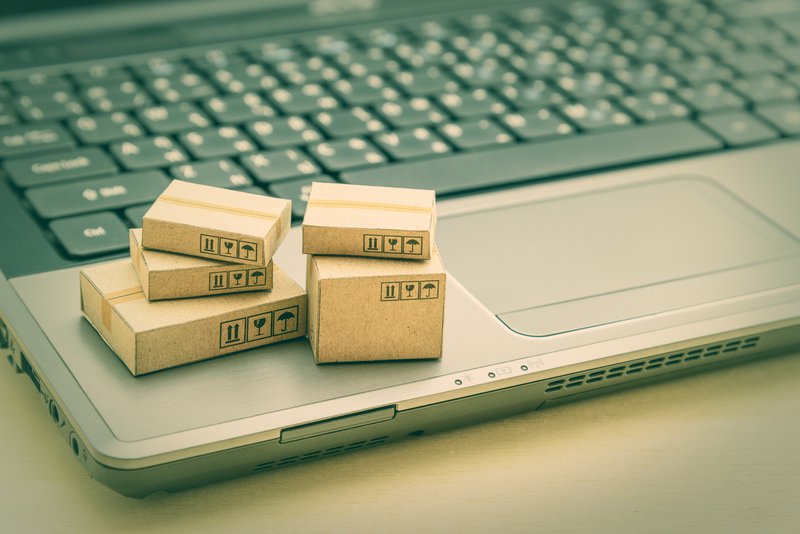
Consider these increases over a 16-month period:
- Identifying and researching new suppliers (34% in December 2021 vs. 22% in August 2020)
- Considering and evaluating new suppliers (33% in December 2021 vs. 22% in August 2020)
- Ordering (36% in December 2021 vs. 35% in August 2020)
The remaining B2B buyers used traditional face-to-face or remote human interactions when performing the above tasks.
With many experts declaring that the worst pandemic has passed, what is the takeaway for B2B buyers? While it’s certain that many companies will ultimately adopt a hybrid model—with an emphasis on online—the shift to digital is here to stay. But why?
Why Digital Self-Service Will Remain Popular Even Post-pandemic
During the pandemic, many consumers who had never dealt with digital payments were suddenly forced to adopt these methods. Knowing they couldn’t wait out the local lockdowns and store closures, households began ordering items online and paying via digital wallets.
Although the fear of contracting the virus was the driving force behind the shift, consumers appreciated the convenience of ordering online. Moreover, digital payments eliminated the need for “dirty” paper money and coins—both online and in-store. In fact, the World Bank noted in June 2022 that the pandemic had substantially accelerated the use of digital currency worldwide.
For B2B transactions, embracing digital was the logical next step. Many millennials and Gen-Zs are now taking up corporate buying positions in companies. Being digital natives, they have no issue with doing their own fact-finding before committing to a purchase.
According to Gartner research, a surprising 44% of Millennial B2B buyers prefer not to engage with sales reps at any point of the sales journey. However, this doesn’t mean sales reps will become dispensable. Rather, they’ll need to learn innovative ways of engaging the new generation of buyers. Foremost, this entails providing clients with value through digital means. Considering the traditionally long and complex B2B sales journey, there’s much to be said to ease and streamline it with digital options.
Most Popular B2B Online Marketplace Platforms
At present, there are plenty of established B2B online marketplaces. These open platforms are willing to accept and accredit any vendor, provided they meet specified criteria. Buyers are even more welcome to join this network.
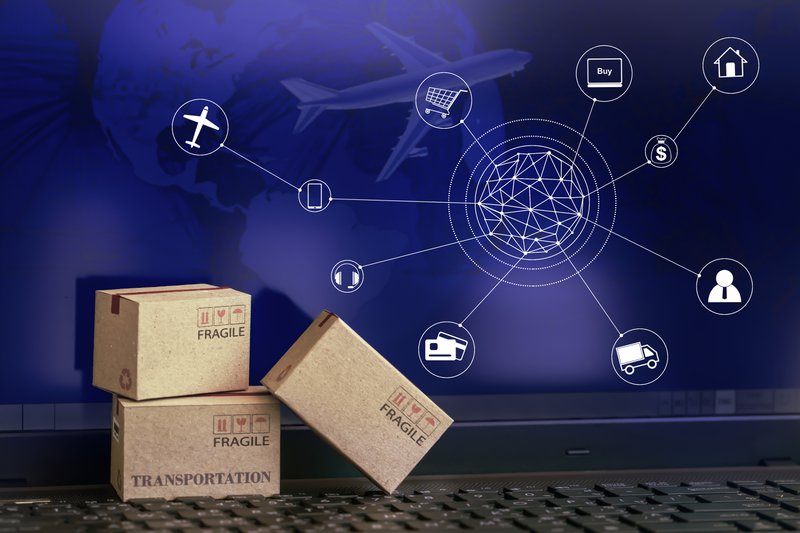
Here are some of the top-performing online marketplaces today.
Alibaba
Alibaba is among the most prominent online marketplaces and one of the biggest eCommerce companies globally. At one point, the Alibaba Group held the title of the world’s largest eCommerce company based on a gross merchandise value (GMV) of $1.145 trillion. In 2015, it held 80% of the Chinese eCommerce market. Besides the wholesale market, Alibaba also sells retail through its B2C arm, Tmall, in China, and Lazada and AliExpress everywhere else in the world.
The Alibaba Group was founded in 1997—the same year as Amazon’s initial public offering—by businessman Jack Ma and 20 other investors. Alibaba started out as a nondescript Chinese bulletin board advertising the country’s manufacturing capabilities to an international market. However, it quickly established itself as the dominant player in the huge Chinese market.
In 2021, the company was responsible for nearly one-fourth of China’s total retail spend. In the same year, it posted its one-billionth active customer—a particularly significant milestone, especially considering that only 20% of its customers live outside China.
eWorldTrade
Headquartered in Dallas, Texas, eWorldTrade is another prominent B2B online marketplace with an extensive international reach. The company boasts fast, reliable, and simple trade transactions, aiming to provide quality services to its buyers and sellers. Further, according to its Facebook profile, it has more than 1 million verified traders online.
Despite its relatively low-profile image—at least compared with other B2B marketplaces— eWorldTrade enjoys an extensive presence in emerging and established markets, such as China, Nigeria, and Pakistan. In addition, the company had estimated web sales of between $50 and $100 million in 2021, and attracts more than 200,000 visitors to its eCommerce platform every month.
Amazon Business
Amazon Business is the B2B counterpart of its more popular B2C sibling, Amazon. Established in 2015, Amazon Business went all-out to catch up to Alibaba and other B2B pioneers.
Registration on this B2B online marketplace is free. Regular users receive the standard starter kit for online B2B marketplace vendors, plus perks such as multi-user accounts and quantity discounts.
Like its retail equivalent, Amazon Business offers Business Prime accounts to vendors willing to pay an annual fee. This unlocks exclusive features, such as having 100+ user logins for a single business account. It also includes access to Amazon WorkDocs, a team collaboration tool for cloud documentation.
Amazon founder and former CEO Jeff Bezos has emphasized that despite its late launch, Amazon for Business is an integral part of the company. After posting $10 billion in annualized sales three years after it launched, the B2B arm of Amazon recorded global annualized sales of $25 billion in March 2021.
Gross sales grew almost three times faster than they did for its retail sister. However, despite rising sales, the company remains limited in its operational coverage. Currently, Amazon Business only operates in the US, UK, France, Germany, Italy, Spain, India, Japan, and Canada.
Global Sources
Global Sources is a pioneer of sorts in the business-to-business industry. It started way before the advent of the B2B online marketplace, having launched in 1971 in Hong Kong. Back then, the company regularly published the Asian Sources series of magazines, highlighting products and manufacturers coming from China.
In particular, Global Sources focuses on electronics, gifts, mobile accessories, and fashion products. Besides its publications, Global Sources also organizes many trade fairs and exhibitions highlighting manufacturers from China. Eventually, B2B technology caught up with the company, and it launched its eCommerce platform—Asian Sources Online—in 1995.
With a knowledge of China’s manufacturers dating back over 50 years, Global Sources holds particular sway with buyers and sellers looking for quality, mass-produced products. Despite its limited product range, the company generated $677 million in revenues last year and is listed on the New York Stock Exchange.
SeeBiz
SeeBiz is a fairly new player in the B2B online marketplace, launching in 2015. The SeeBiz platform was founded due to the company’s collective frustration regarding the lack of reliable tools for their online wholesale businesses. Headquartered in Los Angeles, California, the company now operates an online sales portal and networking platform connecting manufacturers, distributors, wholesalers, and retailers.
For a $650 annual subscription, SeeBiz gives vendors access to its sales portal. Membership includes free storefront design, uploading of 50 products, and product description copies for each item. In addition, there’s a free introductory video, a feature on the SeeBiz Marketplace homepage, and a paid campaign on Google.
Zobrist Mobiecom: The Storefront for Your B2B Marketplace
Unlike the previous platforms we’ve looked at, Zobrist Mobiecom helps businesses manage the storefronts of their own online stores. In eCommerce, performance is everything, whether your store is part of a larger B2B online marketplace or an independent platform.
Above all, businesses need a responsive storefront that quickly loads information on selected products. Most buyers choose to abandon their carts when pages load too slowly, leading to lost sales opportunities.
Mobiecom is a software as a service (SaaS) product from Zobrist Software that addresses this lag in page displays with a mobile-first design that optimizes website loading times. From experience, Zobrist has learned that most storefronts experience delays in loading the product list page (PLP) and the product detail page (PDP).
The main reason is the sheer volume of product information being transferred from the server every time the user clicks on a page. In contrast, Mobiecom can deliver almost instant page responses. With slow-loading pages a thing of the past, vendors can reduce or even eliminate troublesome customer drop-offs.
The Mobiecom solution offers a range of unique and functional features for your storefront. These include search features to account, product display, shopping cart, and checkout features.
How to Succeed in the B2B Online Marketplace
Getting buyers and sellers actively transacting and communicating in the B2B online marketplace requires reliable infrastructure, an intuitive platform, and highly-engaging features.

Here are some factors that can help improve the customer experience—whether they’re buyers, sellers, or both.
An Excellent Buyer and Seller Experience
A great customer experience is what drives sales. It’s the feeling that comes with a successful transaction—an experience that buyers will want to repeat over and over again. That’s why it’s vital to ensure that your entire team is on board to provide clients with the best possible experience for the entire duration of the sales journey.
Sales teams should be able to convey their passion for the business’s products and services and receive positive feedback. This means providing them with a streamlined and easy-to-use B2B storefront. And the more teams interact with the storefront and its products, the better equipped they become to engage with customers successfully. If your sales reps can translate a positive seller experience into an equally amazing buyer experience for clients, it greatly increases the chances of sealing a deal.
But how do you make the seller experience more engaging in the B2B online marketplace? Navigating through product catalogs and item highlights should be an enjoyable process.
A storefront that’s intuitive and simple to organize is also more flexible and customizable to different clients’ preferences. Ensuring site pages load quickly is another element in creating an organized and efficient online marketplace, making for a superior seller and buyer experience.
Strategic Seller Recruitment Campaigns
Constructing your own B2B online marketplace has its advantages. For instance, greater control over content and features, plus lower operational costs, thanks to reduced royalty fees and charges. However, building a good B2B site doesn’t guarantee that sellers will arrive in droves and put up their wares.
What can you do to encourage seller acquisition? And how do you go about appealing to buyers as well? Often, the problem with attracting sellers is that they want to see buyers on your site. Conversely, buyers want to see more sellers before signing up.
One way to jumpstart proceedings is to begin with the hard bargainers—get the sellers onboard. Recruiting sellers doesn’t have to mean making them switch platforms. Instead, position your offer as a way to expand their customer base. With sellers on your list, you can use their extensive product catalogs as a drawcard for buyers.
Make sure that even the most comprehensive product catalogs can easily be uploaded to your platform. Fast and reliable sites provide excellent motivation for sellers to join your network.
Another way to attract both buyers and sellers is through transparency. Providing clear and transparent communication regarding services, fees, commissions, and incentives gives them an idea of what your platform offers.
Efficiency Through Automation
Automation in B2B systems is also hugely attractive to sellers. It reassures them that maintaining their storefronts and performing administrative/maintenance tasks won’t take up too much of their time.
For example, tools to automate email marketing, update prices and inventory, and even send out push messages over social media can prove a compelling reason to partner with you.
Meanwhile, marketing automation also helps to identify leads and turn them into customers. Strategically placed advertisements, promotions, and calls to action automatically delivered at regular intervals can pique a prospect’s interest. Mix in personalization, and you’re even more likely to boost engagement metrics.
Appropriate and Flexible Payment Options
Flexible payment processes encourage buyers and sellers, as businesses aren’t limited by their payment methods. But adding more options doesn’t necessarily mean dropping existing or traditional payment terms. Make sure that your vendor’s accepted payment terms match your infrastructure’s.
Extending credit lines to trusted clients is a great way to sustain long-term relationships. As long as they enjoy these privileges, they have fewer reasons to switch to another vendor. At the same time, other clients might want to improve their standing with you to benefit from similar privileges. The same goes for providing Automated Clearing House (ACH) services instead of only credit cards, as they charge lower fees.
Adding digital payment systems like PayPal or Venmo is another way to attract newer and more forward-thinking businesses. It’s a similar story with cryptocurrency—though take a long, hard look at this option before finalizing your course of action. Many experts still doubt whether cryptocurrency will fully recover in short- to medium-term.
Customer Acquisition Tactics
Acquiring the largest number of customers might be a good idea for operators of a B2C platform. By contrast, with a B2B online marketplace, you’ll need to consider your market positioning carefully. With a niche-based ecosystem, you’ll have to limit your invites to buyers of the specific products you carry. Also, be aware of the delivery range of your vendors—you could run into major problems if sellers can’t accommodate buyers due to delivery issues.
Once you’ve acquired customers, retaining them is the next challenge. Providing loyal clients with incentives can make them appreciate your platform more. Giving them the means to collect data and generate insights from their B2B platform is another crucial element, as it will help them to identify their shortcomings and tweak their methods accordingly.
Adding features such as analytics or automated solutions to your platform helps to heighten the seller experience.
The bottom line remains simple—if you provide a convenient and profitable platform for your client, they’ll think twice before leaving you for a competitor.
A Future-Proof Backend Architecture
Building a B2B online marketplace requires careful planning, especially if you want to scale up operations at some stage. Take the time to design the architecture carefully so you won’t leave out a crucial feature by mistake.
Always consider the user experience—regardless of your site’s functionality, a problematic interface can kill the user’s interest faster than almost anything. Ensuring an easier and more satisfying sales journey will do more to promote your platform than any advertised product or featured vendor in your catalog.
Keeping the bigger picture in mind when fleshing out the system is important. Producing the necessary diagrams can be helpful. For instance, the enterprise design diagram, which accommodates the entire features list, third-party integrations, and how the components interconnect with each other. This includes aspects such as data on cloud connections, OS interoperability, as well as VPNs, and private networks. From there, make a note of data flow diagrams, which track where input data goes during transactions.
Finally, be sure to future-proof your design. Newer technology is always around the corner, so your system must be capable of accommodating expansions and upgrades. These factors will help prolong your platform’s lifespan and keep costs down.
How to Get Started: Find Your B2B SaaS Platform Partner
A successful B2B online marketplace is only as good as its software. Over and above designing architecture, you’ll need to secure the right software as a service (SaaS) partner for advanced functionality. The trick for an online B2B marketplace platform is finding complementary software that enhances the client’s ability to elevate the user experience.
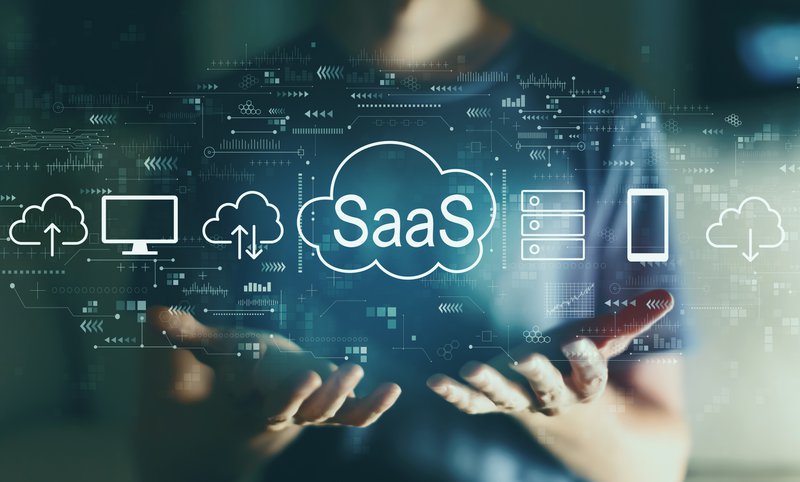
Here are a few factors to consider when evaluating which SaaS partner is right for you.
Platform Alignment and Integration
SaaS that immediately plugs into your existing architecture can save you time and money that you would otherwise spend on adjusting code and integration. Further, the software should be compatible with popular B2B/B2C platforms like Salesforce Commerce Cloud, HCL Commerce, or Adobe Commerce Cloud. Instead of investing in migration, these resources might be better used for future requirements. For example, expanding the platform or adding features such as additional payment methods or omnichannel options.
Scalability
A B2B platform, especially in the launch stage, might start small and only accommodate a limited number of vendors. This is understandable, as making advance preparations for a larger capacity entails additional costs and might delay the platform rollout.
That said, the SaaS developer still needs to plan for a final product that is sufficiently scalable to accommodate any future expansion. If this isn’t taken care of from the get-go, the client may have to undertake extensive upgrades or brace for system failures once the platform exceeds its projected capacity.
Configurability
SaaS developers need to be able to configure apps for all types of systems and devices. Although B2B platforms aren’t necessarily one-size-fits-all systems, mobility requires users to be able to access the web-based app using different web browsers—and running under different operating systems. Planning for high configuration flexibility from the beginning helps the developer and the client to future-proof the app and save on further development costs.
Data Management and Security
Handling user data has become increasingly tricky. Data privacy laws (GDPR, CCPA/CRPA, and HIPAA) require strict compliance in handling private information. As such, the SaaS vendor should have experience in handling data and be able to document where the information goes.
At the minimum, the developer requires ISO-27000 or similar certification. Moreover, apps must have built-in security measures—such as two-factor authentication—before allowing access to sensitive information.
Track Record and Stability
A provider’s past performance and background are key. Stability and a good track record give vendors confidence, knowing that the software developer can get the job done without falling victim to liquidity issues or manpower shortages. It also solidifies their commitment to fulfilling contractual obligations and service-level agreements.
Kickstart Your B2B Business With Mobiecom
Customers, especially busy B2B buyers, can’t wait for pages to load. Today, the average page load time is no more than one to two seconds. A wait of more than five seconds can be a B2B site’s death sentence. Even an extra few seconds could push the buyer to abandon the cart and look elsewhere. This might be the last time for many users to visit your site.
So, how bad is the damage caused by slow-loading websites? KissMetrics reported that even a one-second delay can reduce conversions by 7%. Imagine the damage this delay will inflict on a business with an extensive product catalog. The loss of potential purchases can add up significantly.
If you’re about to start your own B2B online marketplace using the IBM Websphere Digital Commerce platform, selecting Mobiecom from Zobrist Software is a sound choice. The application ensures lightning-fast page loads for even the most detailed and comprehensive storefront product catalogs.
Mobiecom Saves the Day for Your B2B Online Marketplace
Mobiecom solves a range of issues in the B2B online marketplace. Primarily, it does away with too-slow webpage loading by transferring and caching data immediately. The user doesn’t need to go to the page for information to be stored. As a result, complete product catalogs can be loaded almost instantaneously—in seconds rather than minutes.
Further, Mobiecom provides a solution for slow PLP or PDP experiences when clients may still be using older-generation websites. These stores’ product catalogs list hundreds or thousands of items, and page load times can add substantially due to the massive volume of data involved.
Try Mobiecom Now
Don’t let your platform lose visitors because of unreliable page load rates. The Mobiecom experience guarantees fast-loading pages, no matter how extensive your product catalogs.
We’ve told you how it works, but you’ll only find out by trying Mobiecom for yourself. Zobrist will give you a free demonstration of what the app can do for you. Simply click on this link and register for a short product demonstration.
Turn shoppers into buyers with more responsive storefronts. Try Mobiecom today!

